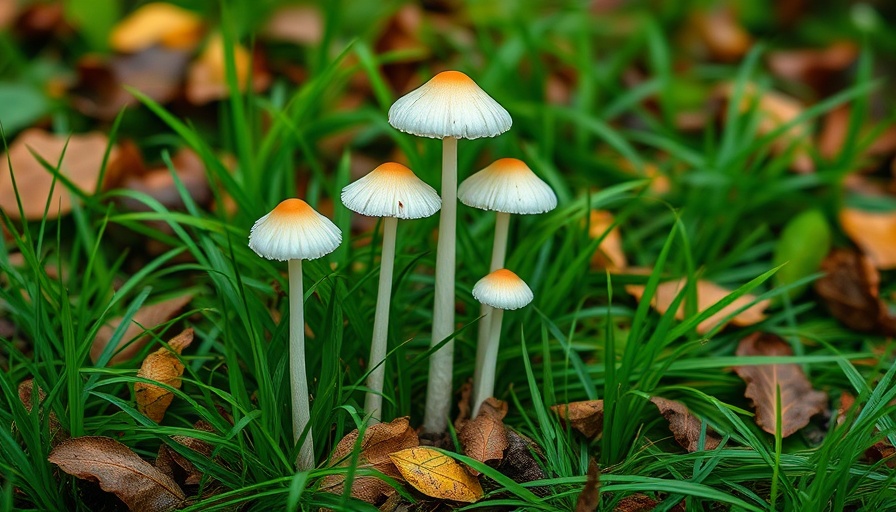
Mushrooms in Your Lawn: A Natural Indicator of Healthy Soil
Spotting mushrooms in your yard may send shivers down the spine of any homeowner who takes pride in their green lawn. However, before you panic, it's essential to understand that mushrooms often signal a healthy ecosystem. Many fungi, including mushrooms, thrive in areas with rich organic matter and moisture, indicating that your soil is alive and well. As Claudia Bashian-Victoroff, a fungal ecologist from Holden Arboretum, points out, these mushrooms can typically be left alone, allowing nature to take its course.
Identifying Common Lawn Mushrooms
While it’s tempting to look at these mushrooms as unsightly intruders, many are quite beneficial. Here are some common types you might encounter:
1. Button Mushroom (Agaricus bisporus)
Recognizable by its smooth, grayish-white cap, the Button Mushroom is well-loved in kitchens worldwide. Bashian-Victoroff observes that its presence usually indicates moisture in the soil, especially after a good rain. These decomposer fungi contribute to soil health by breaking down organic material.
2. Parasol Mushroom (Macrolepiota procera)
With their broad, scaly caps, Parasol Mushrooms make an impressive appearance in lawns, sometimes towering as high as 12 inches. While they are edible, caution is advised as they can be mistaken for toxic varieties. These mushrooms thrive in moist, shaded areas, creating a stunning visual under trees.
3. Ringless Honey Mushrooms (Armillaria tabascens)
Golden-brown and often found at the base of trees infected with Armillaria fungus, these mushrooms cluster together, making a striking feature in your landscape. Although they disappear quickly, Bashian-Victoroff offers a safe removal method: uprooting them gently and disposing of them.
Are All Mushrooms Safe?
It's essential to note that while handling mushrooms is generally safe, identifying them accurately is critically important. Unlike many plants, touching mushrooms doesn't pose immediate risks. Nevertheless, if you're unsure of a mushroom's species, it's best to consult a mushroom identification expert. Always keep pets and children away from unidentified fungi to prevent accidental ingestion.
Taking Action: Maintaining a Healthy Lawn
If mushrooms appear frequently and you prefer to limit their presence, there are several steps you can take. Bashian-Victoroff suggests reducing soil moisture through aeration and landscape modifications, like planting trees. Additionally, it’s wise to compost fallen leaves and plant matter instead of leaving them on your lawn, which can encourage more mushrooms.
Conclusion: Embracing Nature's Symphony
The presence of mushrooms in your lawn is not a nuisance but rather a natural indicator of soil vitality. While you might consider removing them, remember that these fungi are a part of nature's balance. Embrace the beauty they bring to your yard and enhance your understanding of what’s happening beneath the surface. After all, a thriving lawn reflects a healthy ecosystem!
Actively engage with your lawn's microbiome by learning about its needs and keeping it healthy. Explore additional resources on sustainable gardening practices to maximize your home's outdoor living space.
 Add Row
Add Row  Add
Add 




 Add Row
Add Row  Add
Add 

Write A Comment